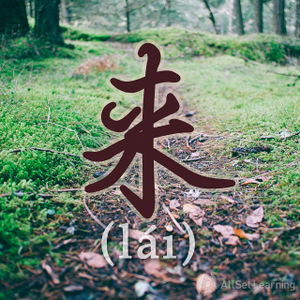Difference between revisions of "Using "lai" as a dummy verb"
| Line 22: | Line 22: | ||
*我 <em>来</em> 吧。<span class="pinyin">Wǒ <em>lái</em> ba.</span><span class="trans">Let me do it.</span> | *我 <em>来</em> 吧。<span class="pinyin">Wǒ <em>lái</em> ba.</span><span class="trans">Let me do it.</span> | ||
| − | * | + | *老师 ,我 <em>来</em> 读 。<span class="pinyin">Lāoshī, wǒ <em>lái</em> dú.</span><span class="trans">Teacher, let me read it.</span> |
| − | * | + | *我 <em>来</em> 看看 。<span class="pinyin">Wǒ <em>lái</em> kànkan.</span><span class="trans">Let me see it.</span> |
| − | * | + | *我 <em>来</em> 想想 。<span class="pinyin">Wǒ <em>lái</em> xiǎngxiang.</span><span class="trans">Let me think about it.</span> |
| − | * | + | *你 <em>来</em> 说 。<span class="pinyin">Nǐ <em>lái</em> shuō.</span><span class="trans">You say it.</span> |
| − | *我 <em>来</em> | + | *我 <em>来</em> 抱抱 。<span class="pinyin">Ràng wǒ <em>lái</em> bàobao.</span><span class="trans">Let me hold it.</span> |
| − | *你 <em>来</em> | + | *你 写 得 好看 ,你 <em>来</em> 吧 。<span class="pinyin">Nǐ xiě de hǎokàn, nǐ <em>lái</em> ba.</span><span class="trans">You write well. You write it.</span> |
*如果 你 觉得 我 做饭 不 好吃 ,你 <em>来</em> 做 !<span class="pinyin">Rúguǒ nǐ juéde wǒ zuòfàn bù hǎochī, nǐ <em>lái</em> zuò!</span><span class="trans">If you don't think my food is tasty, then you cook!</span> | *如果 你 觉得 我 做饭 不 好吃 ,你 <em>来</em> 做 !<span class="pinyin">Rúguǒ nǐ juéde wǒ zuòfàn bù hǎochī, nǐ <em>lái</em> zuò!</span><span class="trans">If you don't think my food is tasty, then you cook!</span> | ||
</div> | </div> | ||
Revision as of 03:08, 19 September 2017
The verb 来 (lái) can be used as a "dummy verb," similar to the way "do" is used in English.
Contents
Structure
The structure for using 来 as a dummy verb is very basic. Usually it is a very short phrase, kind of like "your turn!," "let me give it a shot!," or "you do it!" in English. Usually it is used with 你 or 我 as the subject, and it ends with the 来. Sometimes it can end with a 吧.
A scenario: Imagine you are with your some friends making dinner. There is a bottle of Chinese pickles that you want to open, but can't because the lid is so tight. You start passing it around to see who can open it, and no one is able to, until your body-builder friend comes in and says, "我来!" He is saying, "Let me do it!"
(让 +) Subj. + 来
(让 +) Subj. + 来 + Verb
Examples
- 我 来 吧。Let me do it.
- 老师 ,我 来 读 。Teacher, let me read it.
- 我 来 看看 。Let me see it.
- 我 来 想想 。Let me think about it.
- 你 来 说 。You say it.
- 我 来 抱抱 。Let me hold it.
- 你 写 得 好看 ,你 来 吧 。You write well. You write it.
- 如果 你 觉得 我 做饭 不 好吃 ,你 来 做 !If you don't think my food is tasty, then you cook!
See also
Sources and further reading
Books
Academic Articles
- 现代汉语形式动词研究 Research on Dummy Verb in Modern Chinese
- 現代漢語中的形式動詞 Dummy Verbs in Contemporary Chinese



